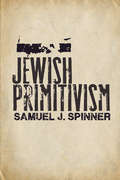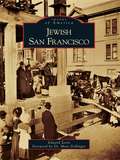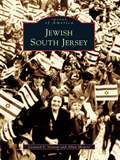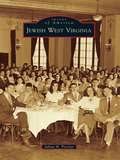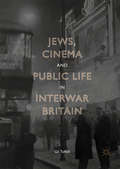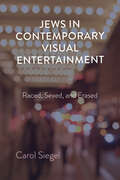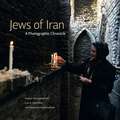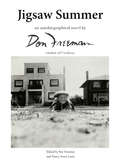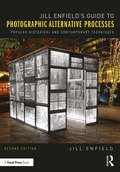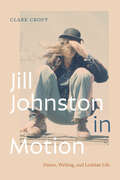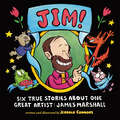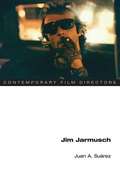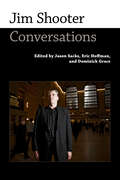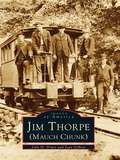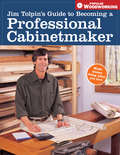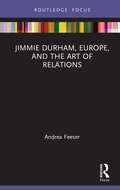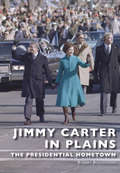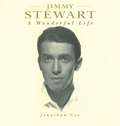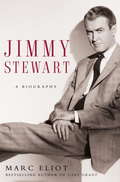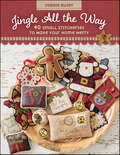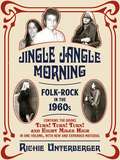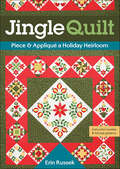- Table View
- List View
Jewish Primitivism (Stanford Studies in Jewish History and Culture)
by Samuel J. SpinnerAround the beginning of the twentieth century, Jewish writers and artists across Europe began depicting fellow Jews as savages or "primitive" tribesmen. Primitivism—the European appreciation of and fascination with so-called "primitive," non-Western peoples who were also subjugated and denigrated—was a powerful artistic critique of the modern world and was adopted by Jewish writers and artists to explore the urgent questions surrounding their own identity and status in Europe as insiders and outsiders. Jewish primitivism found expression in a variety of forms in Yiddish, Hebrew, and German literature, photography, and graphic art, including in the work of figures such as Franz Kafka, Y.L. Peretz, S. An-sky, Uri Zvi Greenberg, Else Lasker-Schüler, and Moï Ver. In Jewish Primitivism, Samuel J. Spinner argues that these and other Jewish modernists developed a distinct primitivist aesthetic that, by locating the savage present within Europe, challenged the idea of the threatening savage other from outside Europe on which much primitivism relied: in Jewish primitivism, the savage is already there. This book offers a new assessment of modern Jewish art and literature and shows how Jewish primitivism troubles the boundary between observer and observed, cultured and "primitive," colonizer and colonized.
Jewish San Francisco (Images of America)
by Edward Zerin Dr Marc DollingerIn San Francisco, the "instant city" of the gold rush days, Jews were pioneers among pioneers. Some came as immigrants directly from Europe, others as resettled adventurers from the East Coast, and still others as scions of southern Sephardic families. Out of this mixed multitude emerged a community with synagogues and institutions to care for the needy and the sick, along with a dignified social fabric. New immigrants following the Russian pogroms of 1883 were absorbed, and the ashen ruins from the 1906 earthquake were rebuilt. The city's cultural treasures and social needs were enriched, and the city's Jews were nurtured by civic commitments. Today's 70,000 San Francisco Jews, standing upon the shoulders of pioneering giants, continue to build and rebuild.
Jewish South Jersey (Images of America)
by Allen Meyers Leonard F. VernonInitial Jewish settlements in South Jersey emerged in the mid-19th century and offered a safe haven for people to re-create strong families and practice religion freely, without fear of government-sponsored violence. Looking for work, German Jews first migrated from their community in Philadelphia to Trenton, and then spread south to Wildwood. Although Jewish settlers were mainly known as merchants and shop owners, many towns also boast the development of the Jewish farmer. While agriculture would eventually be abandoned in favor of manufacturing, there were many extremely successful and historically significant Jewish farms that flourished in the south. Now, of course, people of the Hebrew faith are productive players in every walk of life. Jewish South Jersey touches on the many contributions made by Jewish people in the southern part of the Garden State.
Jewish West Virginia (Images of America)
by Julian H. PreislerWest Virginia has a unique history of Jewish settlement dating back to 1849 when the first Jewish organization in the state, a Jewish burial society, was established by a small group of German Jewish immigrants in the city of Wheeling. From modest beginnings, Jews settled in towns and cities and established businesses and communal organizations. Since that time, the Jews of the Mountain State have been an integral part of the state's economic, cultural, and political life. Though always relatively small in size, West Virginia's Jewish population has been a strong advocate for the state and gained prominence in many areas. Readers will recognize images of well-known institutions such as Shoney's, Cohen's, Frankenberger's, Embee's, and others that bring back fond memories. Despite declines in Jewish population numbers, today's Jewish community remains active and involved in the life of the state.
Jews, Cinema and Public Life in Interwar Britain
by Gil ToffellThis book investigates a Jewish orientation to film culture in interwar Britain. It explores how pleasure, politics and communal solidarity intermingled in the cinemas of Jewish neighbourhoods, and how film was seen as a vessel through which Jewish communal concerns might be carried to a wider public. Addressing an array of related topics, this volume examines the lived expressive cultures of cinemas in Jewish areas and the ethnically specific films consumed within these sites; the reception of film stars as representations of a Jewish social body; and how an antisemitic canard that understood the cinema as a Jewish monopoly complicated its use as a base for anti-fascist activity. In shedding light on an unexplored aspect of British film reception and exhibition, Toffell provides a unique insight into the making of the modern city by migrant communities. The title will be of use to anyone interested in Britain’s interwar leisure landscape, the Jewish presence in modernity, and a cinema studies sensitised to the everyday experience of audiences.
Jews in Contemporary Visual Entertainment: Raced, Sexed, and Erased
by Carol SiegelWhat are the consequences of how Jews are depicted in movies and television series? Drawing on a host of movies and television series from the 1970s to present day, Jews in Contemporary Visual Entertainment explores how the media sexualize and racialize American Jews. Race and sexuality frequently intersect in the depiction of Jewish characters in such shows as The Marvelous Mrs. Maisel, UnREAL, The Expanse, and Breaking Bad, and in films such as Hester Street, Once Upon a Time in America, Casino, Radio Days, Inglourious Basterds, and Barton Fink. When they do, American sexual norms are invariably challenged or outright broken by these anti-Semitic representations of Jewishness.Insightful and provocative, Jews in Contemporary Visual Entertainment disturbingly reveals the far-reaching influence of popular visual media in shaping how American Jews are perceived today.
Jews of Iran: A Photographic Chronicle (Dimyonot)
by Lior B. Sternfeld Hassan Sarbakhshian Parvaneh VahidmaneshThis book reveals one of the most beautiful and complicated untold stories of our time. Westerners often imagine Jews in Iran as a captive and oppressed community, alienated within their home nation yet restricted from leaving it. The reality is much more complex. Jews of Iran is a photographic journey through twenty-first-century Iran, providing a unique view of the country’s Jewish community in situations typically unknown to the Western world. Photojournalist Hassan Sarbakhshian spent two years living among Iran’s Jewish communities, joining them for holidays, family gatherings, and travels, and—with the help of fellow journalist Parvaneh Vahidmanesh—documenting how they lived. Moving beyond the well-known state and regional confrontations, the photos that Sarbakhshian took tell a broader story about a community of people who live in the figurative and literal middle. They are Iranian nationals by birth and by choice, and they are Jews by religious affiliation. Full loyalty to their country is expected, even as their ancestral homeland is at odds with their political homeland. This photographic chronicle illuminates the grey zone that they inhabit.Featuring over one hundred full-color photos, contextualized with extensive annotations, and accompanied by a substantive introduction written by historian Lior B. Sternfeld, Jews of Iran calls into question Western views of this religious community.
Jews of Tampa (Images of America)
by Dr Rob Norman Marcia Jo ZerivitzSpanish explorers arrived in Tampa Bay in the 16th century. Jews were first allowed to live in Florida in 1763 and less than 100 years later, Tampa became a city. The arrival of the railroad and the cigar industry in the 1890s attracted immigrants. Many were Jews, who helped propel growth, especially in Ybor City, where they owned more than 80 businesses. Over the decades, Jews participated in civic and Jewish organizations, the military, politics, and in developing Tampa as a sports center. Today, with about 23,000 Jews in Tampa, there are fifth-generation residents who represent the continuity of a people who contribute vibrancy to every area of the community.
Jigsaw Summer
by Don FreemanJust before he died, Don Freeman, well-known author/illustrator of children's books (Corduroy, Earl the Squirrel, and many more), was working on an autobiographical novel of his youth in San Diego. Jigsaw Summer has finally arrived! The story of the last year with his guardian, yearning to get away, but reluctant to leave all his friends, is told with honesty, humor, and with some deep glimpses into his personality. Don's text is accompanied by his sketches and actual photographs of where Jigsaw Summer takes place, including his father and his strict guardian.
Jill Enfield’s Guide to Photographic Alternative Processes: Popular Historical and Contemporary Techniques (Alternative Process Photography)
by Jill EnfieldJill Enfield’s Guide to Photographic Alternative Processes, 2nd edition, is packed with stunning imagery, how-to recipes, techniques and historical information for emulating the ethereal, dream-like feel of alternative processing. This fully updated edition covers alternative processing from its historical roots through to digital manipulation and contemporary techniques and how to combine them. It features several new techniques alongside new approaches to older techniques, including hand painting on silver gelatin prints, ceramics and photography, cyanotypes, wet plate collodion, digital prints and many more. Enfield showcases the different styles and methods of contemporary artists together with suggestions for vegan and vegetarian friendly alternative processing, transforming 2D images to 3D installations, and how to apply darkroom techniques to digital captures. Professionals, students and hobbyists will discover how to bring new life and imagination to their imagery. Whether in a darkroom using traditional chemicals, at the kitchen sink with pantry staples, or in front of the computer re-creating techniques digitally, you will learn how to add a richness and depth to your photography like never before.
Jill Johnston in Motion: Dance, Writing, and Lesbian Life
by Clare CroftPerformer, activist, and writer Jill Johnston was a major queer presence in the history of dance and 1970s feminism. She was the first critic to identify postmodernism’s arrival in American dance and was a fierce advocate for the importance of lesbians within feminism. In Jill Johnston in Motion, Clare Croft tracks Johnston’s entwined innovations and contributions to dance and art criticism and activism. She examines Johnston’s journalism and criticism—in particular her Village Voice columns published between 1960 and 1980—and her books of memoir and biography. At the same time, Croft attends to Johnston’s appearances as both dancer and audience member and her physical and often spectacular participation at feminist protests. By bringing together Johnston’s criticism and activism, her writing and her physicality, Croft emphasizes the effect that the arts, particularly dance, had on Johnston’s feminist thinking in the 1970s and traces lesbian feminism’s roots in avant-garde art practice.
JIM!: Six True Stories about One Great Artist: James Marshall
by Jerrold ConnorsA picture book biography of the late, great James Marshall—illustrator of Miss Nelson is Missing and the George and Martha series—and as clever, delightful, and daring as Jim himselfAuthor and illustrator James Marshall let kids in on the joke. He knew little kids were smart, and he didn't talk down to them in his stories. He was right—kids loved his picture books. Decades after his death, the characters he illustrated—Miss Nelson, Viola Swamp, George and Martha, Goldilocks, Fox and His Friends—are still beloved. James Marshall should be at least as famous as his characters, and now he is, in his own picture book biography. Created in an irreverent style inspired by James Marshall's own art and storytelling, this delightful biography, featuring James as a fox, celebrates in both form and content what made James—&“Jim&” to his friends—so talented, funny, and special, and what has made his tales last. This time, Jim is the main character.&“Funny and filled with [insights.]&” —Booklist, starred review &“A better bio of Jim could hardly exist.&” —Kirkus, starred review &“Poignantly, comically human.&” —Publishers Weekly
Jim Jarmusch (Contemporary Film Directors)
by Juan A. SuarezThe first major English-language study of Jarmusch At a time when gimmicky, action-driven blockbusters ruled Hollywood, Jim Jarmusch spearheaded a boom in independent cinema by making low-budget films focused on intimacy, character, and new takes on classical narratives. His minimal form, peculiar pacing, wry humor, and blank affect have since been adopted by directors including Sophia Coppola, Hal Harley, Richard Linklater, and Wong Kar-Wai. Juan A. Suárez's Jim Jarmusch analyzes the director's work from three mutually implicated perspectives: in relation to independent filmmaking from the 1980s to the present; as a form of cultural production that appropriates existing icons, genres, and motifs; and as an instance of postmodern politics. A volume in the series Contemporary Film Directors, edited by James R. Naremore
Jim Marshall: Images and Stories from a Photography Legend
by Amelia DavisJim Marshall created iconic images of rock 'n' roll stars, jazz greats, and civil rights leaders. He had the power to look into the soul of an individual and to capture the mood of an entire generation. This deluxe, career-spanning volume showcases hundreds of photographs: intimate portraits, heady crowd scenes, and haunting street shots evoking the sights and sounds of the 1960s and 1970s. Marked-up proof sheets offer insight into Marshall's process, while in-depth essays from his contemporaries tell a compelling story about this larger-than-life man. Nearly a decade after his death, Marshall's legacy is the subject of a documentary feature film.
Jim Shooter: Conversations (Conversations with Comic Artists Series)
by Jason Sacks, Eric Hoffman, and Dominick GraceAs an American comic book writer, editor, and businessman, Jim Shooter (b. 1951) remains among the most important figures in the history of the medium. Starting in 1966 at the age of fourteen, Shooter, as the young protégé of verbally abusive DC editor Mort Weisinger, helped introduce themes and character development more commonly associated with DC competitor Marvel Comics. Shooter created several characters for the Legion of Super-Heroes, introduced Superman’s villain the Parasite, and jointly devised the first race between the Flash and Superman. When he later ascended to editor-in-chief at Marvel Comics, the company, indeed the medium as a whole, was moribund. Yet by the time Shooter left the company a mere decade later, the industry had again achieved considerable commercial viability, with Marvel dominating the market. Shooter enjoyed many successes during his tenure, such as Chris Claremont and John Byrne’s run on the Uncanny X-Men, Byrne’s work on the Fantastic Four, Frank Miller’s Daredevil stories, Walt Simonson’s crafting of Norse mythology in Thor, and Roger Stern’s runs on Avengers and The Amazing Spider-Man, as well as his own successes writing Secret Wars and Secret Wars II. After a rift at Marvel, Shooter then helped lead Valiant Comics into one of the most iconic comic book companies of the 1990s, before moving to start-up companies Defiant and Broadway Comics. Included here is a 1969 interview that shows a restless teenager; the 1973 interview that returned Shooter to comics; a discussion from 1980 during his pinnacle at Marvel; and two conversations from his time at Valiant and Defiant Comics. At the close, an extensive, original interview encompasses Shooter’s full career.
Jim Thorpe (Images of America)
by John H. Drury Joan GilbertMauch Chunk, now Jim Thorpe, was established on the Lehigh River as a shipping depot for anthracite coal in 1818 by Josiah White, a Philadelphia Quaker and brilliant engineer, and his trusted business partner, Erskine Hazard. By 1829, White and Hazard had founded the Lehigh Coal & Navigation Company and built an efficient transportation system that moved coal nine miles over the mountains to Mauch Chunk by Switchback Gravity Railroad, and forty-six miles along the Lehigh Canal to Easton. With the arrival of the railroads, the Switchback became a major tourist attraction. As rail excursionists descended on Mauch Chunk to experience a hair-raising ride on America's first roller coaster and enjoy the magnificent scenery, the coal shipping town, billed by the railroads as "the Switzerland of America," became a tourist destination second in popularity to Niagara Falls. In a story stranger than fiction, the town exchanged its name for the name of Jim Thorpe when the 1912 Olympic hero was laid to rest there in 1954. Through an extraordinary collection of photographs, Jim Thorpe (Mauch Chunk) tells the story of the athlete and his burial, the Switchback Gravity Railroad, the Lehigh Canal, the social scene, and the town's Victorian legacy.
Jim Tolpin's Guide to Becoming a Professional Cabi
by Jim TolpinYour Blueprint for Making Good Cabinetry and Good MoneyIf you've ever dreamed of making an honest living with your hands, then let Jim Tolpin show you how to become a professional cabinetmaker without losing your shirt - or your sanity.Thirty years ago Tolpin almost destroyed his custom cabinetmaking business because he committed every easy-to-make but hard-to-avoid mistake. He fixed his shop, his woodworking techniques and his business model so that instead of them making him crazy, they would make him a comfortable living.With the help of Jim Tolpin's Guide to Becoming a Professional Cabinetmaker you can follow the same successful and detailed path as you set up your own woodworking business (or make your existing business run more smoothly). Here's what you'll learn:Be as good at business as you are at woodworking. Structure your business correctly. Keep records that allow you to set accurate prices. Find new business and keep the old.Configure your shop, buy your tools and build your jigs so they earn their keep.Blend high-tech European cabinetry techniques with American furniture styles to make cabinets that are quick to build, easy to customize and a snap to sell to people in your market.
Jimmie Durham, Europe, and the Art of Relations (Routledge Focus on Art History and Visual Studies)
by Andrea FeeserThis book investigates Jimmie Durham’s community-building process of making and display in four of his projects in Europe: Something … Perhaps a Fugue or an Elegy (2005); two Neapolitan nativities (2016 and ongoing); The Middle Earth (with Maria Thereza Alves, 2018); and God’s Poems, God’s Children (2017). Andrea Feeser explores these artworks in the context of ideas about connection set forth by writers Ann Lauterbach, Franz Rosenzweig, Pamela Sue Anderson, Vinciane Despret, and Hirokazu Miyazaki, among others. Feeser argues that the materials in Durham’s artworks; the method of their construction; how Durham writes about his pieces; how they exist with respect to one another; and how they address viewers, demonstrate that we can create alongside others a world that embraces and sustains what has been diminished. The book will be of interest to scholars working in contemporary art, animal studies, new materialism research, and eco-criticism.
Jimmy Carter in Plains: The Presidential Hometown (Images of Modern America)
by Robert BuccellatoThe physical connections to most American presidents are deeply rooted in the past and unfamiliar. One can no longer see Washington's birthplace or William Henry Harrison's log cabin. Plains, Georgia, is different, and the attachment Americans have for it remains truly unique. Jimmy Carter in Plains: A Presidential Hometown tells the inspirational story of how one man and his community transformed a nation. When Jimmy Carter, a one-term governor of Georgia, announced his candidacy for president, few took him seriously. Yet, in just two years, he managed to pull off a spectacular and unprecedented victory, thanks to his personal style of politicking and the support of his hometown. Many of his neighbors campaigned for him, and they became known as the "Peanut Brigade." Crowds started to flock to the sleepy hamlet of Plains, making celebrities out of the candidate's mother, younger brother, and daughter. The exceptional photographs of Charles W. Plant guide the reader through the 1976 election, which made Plains "America's hometown."
Jimmy Stewart: A Wonderful Life
by Jonathan CoeOver a career that spanned forty-three years and seventy-seven films, Jimmy Stewart went from leading man to national idol. Classics such as Mr. Smith Goes to Washington, The Philadelphia Story, Harvey, and, of course, It’s A Wonderful Life are far more than mere movies; they are visions of America as it wanted to be seen. With his inimitable (though widely mimicked) down-home drawl, Jimmy Stewart came to embody the ideal American male, lean, affably sarcastic, honorable, endearingly awkward. His double takes were memorable; his way of muttering his asides charmed audiences. Most of all, he was the man whose heart was always in the right place, and who would see always see his way clear to doing the right thing. “If Bess and I had a son,” Harry Truman once said, “we’d want him to be just like Jimmy Stewart.” Jonathon Coe traces Stewart’s beginnings in a small town in Pennsylvania, his amateur dramatics and college years at Princeton, and the early films and stardom through to his heroics as an air force pilot during World War II and his triumphant return to Hollywood. Though he was adored in black and white, Stewart’s mature work shows his range as an actor, his ability to play far more than just the good-natured leading man. By the time he retired from acting, Stewart had films credits that were unparalleled—and a place in the American heart that was unrivaled. Illustrated with 150 photographs, taken on and off the set, this handsome tribute gives us the private man as well as the screen legend and guides us through the whole wonderful life of Jimmy Stewart.
Jimmy Stewart: A Biography
by Marc EliotJimmy Stewart's all-American good looks, boyish charm, and deceptively easygoing style of acting made him one of Hollywood's greatest and most enduring stars. Despite the indelible image he projected of innocence and quiet self-assurance, Stewart's life was more complex and sophisticated than most of the characters he played. With fresh insight and unprecedented access, bestselling biographer Marc Eliot finally tells the previously untold story of one of our greatest screen and real-life heroes. Born into a family of high military honor and economic success dominated by a powerful father, Stewart developed an interest in theater while attending Princeton University. Upon graduation, he roomed with the then-unknown Henry Fonda, and the two began a friendship that lasted a lifetime. While he harbored a secret unrequited love for Margaret Sullavan, Stewart was paired with many of Hollywood's most famous, most beautiful, and most alluring leading ladies during his extended bachelorhood, among them Ginger Rogers, Olivia de Havilland, Loretta Young, and the notorious Marlene Dietrich. After becoming a star playing a hero in Frank Capra's Mr. Smith Goes to Washington in 1939 and winning an Academy Award the following year for his performance in George Cukor's The Philadelphia Story, Stewart was drafted into the Armed Forces and became a hero in real life. When he returned to Hollywood, he discovered that not only the town had changed, but so had he. Stewart's combat experiences left him emotionally scarred, and his deepening darkness perfectly positioned him for the '50s, in which he made his greatest films, for Anthony Mann (Winchester '73 and Bend of the River) and, most spectacularly, Alfred Hitchcock, in his triple meditation on marriage, Rear Window, The Man Who Knew Too Much, and Vertigo, which many film critics regard as the best American movie ever made. While Stewart's career thrived, so did his personal life. A marriage in his forties, the adoption of his wife's two sons from a previous marriage, and the birth of his twin daughters laid the foundation for a happy life, until an unexpected tragedy had a shocking effect on his final years. Intimate and richly detailed, Jimmy Stewart is a fascinating portrait of a multi-faceted and much-admired actor as well as an extraordinary slice of Hollywood history. "Probably the best actor who's ever hit the screen." --Frank Capra. "He taught me that it was possible to remain who you are and not be tainted by your environment. He was not an actor ... he was the real thing." --Kim Novak. "He was uniquely talented and a good friend." --Frank Sinatra. "He was a shy, modest man who belonged to cinema nobility." --Jack Valenti. "There is nobody like him today." --June Allyson. "He was one of the nicest, most unassuming persons I have known in my life. His career speaks for itself." --Johnny Carson.
Jingle All the Way: 40 Small Stitcheries to Make Your Home Merry
by Debbie BusbyStitch, share, gift, and repeat! Nothing beats the feeling of giving and receiving a handmade gift. Gather cotton fabric, wool, or hand-dyed linen, then embellish with simple hand embroidery, rickrack, and trims to bring Christmas cheer to you and yours. Fabric designer and small business owner Debbie Busby guides you through 40 folk-art-style projects for the home. Discover how true holiday magic materializes with a few simple stitches as you make ornaments, stockings, pincushions, pillows, small wall quilts, poinsettia wreaths, and more for a cozy abode. Full of whimsy and cheer, these adorable projects are simple enough to whip one up for everyone on your list. Get all the essential tips and tricks Debbie has gathered throughout the years and a stitch guide you’ll want to refer to over and over again! Includes an overview of supplies needed and advice on choosing the right embroidery floss, needles, and wool.
Jingle Jangle Morning
by Richie UnterbergerJingle Jangle Morning is the story of how folk and rock merged in the 1960s to create folk-rock, injecting social consciousness and poetic lyricism into popular music to scale heights that neither folk nor rock could have reached without blending. It draws on more than 100 first-hand interviews with key musicians, producers, promoters, and journalists, from stars like Roger McGuinn of the Byrds, Donovan, John Sebastian of the Lovin' Spoonful, and Judy Collins to behind-the-scenes producers and cult artists. Starting with the folk revival of the early 1960s, it covers the folk-rock movement from the first stars to electrify folk (especially the Byrds and Bob Dylan) to stars like Buffalo Springfield, Joni Mitchell, and Crosby, Stills, Nash & Young, as well as underrated greats (like Richard & Mimi Fariña, Fred Neil, Tim Buckley, and Nick Drake to nearly unknown cult artists. Previously published in two separate volumes as Turn! Turn! Turn! and Eight Miles High, this combines those books into one, adding 15,000 words of updates and new material. It also adds a 75,000-word mini-book with in-depth descriptions of nearly 200 folk-rock recordings from the era, which together would comprise the ideal 1960s folk-rock box set. All branches of the decade's folk-rock are covered, from early electric folk-rock, protest folk-rock, and folk-rock-psychedelia to singer-songwriters, country-rock, and the distinctively British form of folk-rock.
Jingle Quilt: Piece & Appliqué a Holiday Heirloom
by Erin RussekCreate holiday cheer with the Jingle Quilt! Make a joyful Christmas quilt designed by Erin Russek using the holiday colors you love. Features a large center medallion block ringed by 16 pieced and applique blocks set on-point. Pattern pack comes with full instructions, and the finished project makes for the perfect holiday throw or wallhanging! Piece and appliqué beautiful holiday quilt in your favorite Christmas colors From best-selling Pattern Spot designer Erin Russek Center medallion is ringed by 16 blocks set on-point
Jinxed (Jinxed Trilogy)
by Thommy HutsonBreak a mirrorWalk under a ladderStep on a crackInnocent childhood superstitions …But someone at the Trask Academy of Performing Arts is taking things one deadly step further when the campus is rocked with the deaths of some of its star students.Layna Curtis, a talented, popular senior, soon realizes that the seemingly random, accidental deaths of her friends aren't random—or accidents—at all. Someone has taken the childhood games too far, using the idea of superstitions to dispose of their classmates. As Layna tries to convince people of her theory, she uncovers the terrifying notion that each escalating, gruesome murder leads closer to its final victim: her.Will Layna's opening night also be her final bow?Gold Medal Winner for Fiction: Horror—2019 International Book Awards
